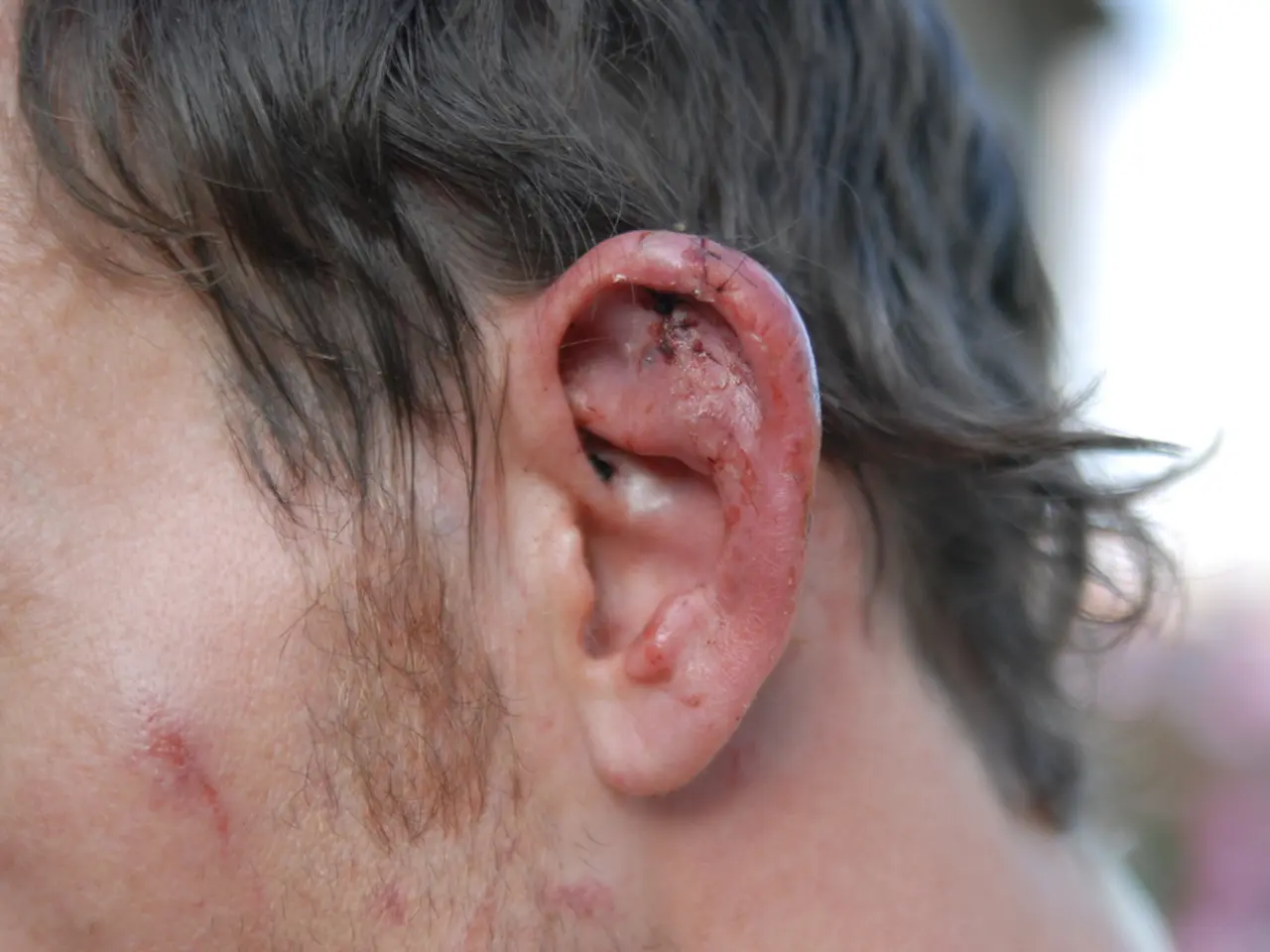Genetic Rarity Explored: Insights into Science, Struggles, and Misconceptions Surrounding Albinism
News Article: Breaking Down Misconceptions and Embracing Diversity: The Struggles and Triumphs of People with Albinism
People with albinism, a genetic condition that affects melanin production, often face a unique set of challenges due to common misconceptions and social stigma. Organizations like the National Organization for Albinism and Hypopigmentation (NOAH) strive to connect individuals to resources and promote public awareness.
Albinism is not associated with a special "albino gene" or skin diseases like leprosy or cancer. Instead, it is caused by mutations in genes such as TYR or OCA2 that affect melanin production, leading to little or no pigment in the skin, hair, and eyes. Despite this, many people with albinism experience feelings of isolation, anxiety, and depression due to social stigma, discrimination, and marginalization.
These misconceptions can lead to psychological distress, barriers to education and employment, increased risk of skin damage and cancer, and reduced access to proper healthcare and social support. People with albinism may also face bullying, social exclusion, and prejudice, even in societies without extreme practices.
In some cultures, particularly in parts of sub-Saharan Africa, albinism is associated with dangerous superstitions. Individuals with albinism may be believed to possess magical powers or to bring bad luck, leading to their exclusion from community life. In extreme cases, people with albinism may become targets of violence, including ritual killings fueled by the belief that their body parts have mystical properties.
However, efforts to educate the public about the realities of albinism help reduce prejudice and improve the quality of life for people with the condition. By celebrating the diversity that albinism represents, we enrich not only the lives of those affected but also our shared understanding of what it means to be human.
Family support, community advocacy, and inclusive policies can help foster a sense of belonging and self-worth for individuals with albinism. Most individuals with albinism are not completely blind; they often have visual impairments that can be managed with assistive devices and accommodations. Understanding the full scope of albinism is essential for providing appropriate care and support.
Educational campaigns can reduce stigma and build empathy by teaching communities about the science of albinism and showcasing the achievements of people with the condition. By breaking down these misconceptions, we can help create a more inclusive world where everyone feels valued and understood.
- People with albinism often face unique challenges due to common misconceptions and social stigma, as noted in the National Organization for Albinism and Hypopigmentation (NOAH).
- Albinism is caused by mutations in genes such as TYR or OCA2 that affect melanin production, leading to little or no pigment in the skin, hair, and eyes, contrary to beliefs about a special "albino gene" or skin diseases like leprosy or cancer.
- Despite this, many people with albinism experience feelings of isolation, anxiety, and depression due to social stigma, discrimination, and marginalization.
- These misconceptions can lead to psychological distress, barriers to education and employment, increased risk of skin damage and cancer, and reduced access to proper healthcare and social support.
- In some cultures, particularly in parts of sub-Saharan Africa, albinism is associated with dangerous superstitions, leading to individuals with albinism being believed to possess magical powers or to bring bad luck.
- Family support, community advocacy, and inclusive policies can help foster a sense of belonging and self-worth for individuals with albinism.
- Understanding the full scope of albinism is essential for providing appropriate care and support, as most individuals with albinism are not completely blind; they often have visual impairments that can be managed with assistive devices and accommodations.
- Educational campaigns are crucial for reducing stigma and building empathy by teaching communities about the science of albinism and showcasing the achievements of people with the condition.
- By breaking down these misconceptions, we can help create a more inclusive world where everyone feels valued and understood in terms of education, personal growth, and career development.
- Volunteering and donations for organizations like NOAH can make a significant difference in providing resources for individuals with albinism, helping them thrive in their education, health, workplace-wellness, and medical-conditions like chronic diseases, respiratory conditions, digestive health, eye-health, hearing, skin-conditions, cardiovascular-health, neurological-disorders, and mental-health.
- Nutrition and fitness-and-exercise play a vital role in promoting overall health and wellness for people with albinism, as they are particularly susceptible to certain medical conditions due to their reduced pigment.
- Beyond traditional medical therapies and treatments, alternative approaches like skin-care, sound therapies, and complementary health practices can also improve the quality of life for people with albinism.
- Embracing diversity, breaking down misconceptions, and fostering a sense of belonging should be crucial aspects of our culture and society, offering education, self-development, and personal growth opportunities for all, including individuals with albinism and those living with various medical conditions, such as autoimmune disorders, chronic diseases, and various skin, respiratory, digestive, eye, and hearing conditions.




